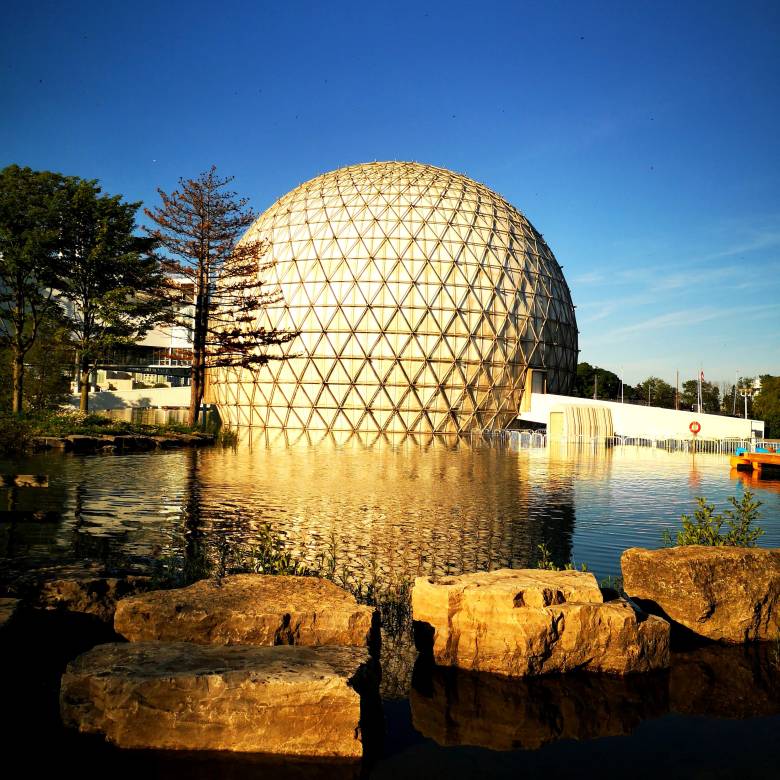
Celebrating the life of leading Canadian architect and OCAD U donor Eberhard Zeidler
OCAD U has learned that Eberhard Zeidler who, along with his family, was a longstanding supporter of the University, has passed away. He died on January 7, just four days shy of his 96th birthday.
For more than five decades, Zeidler designed some of Toronto’s most iconic buildings including the Eaton Centre, Ontario Place, the Toronto Centre for the Arts and Queen's Quay Terminal. In 2003, he led the restoration of the historic Gladstone Hotel.
“We are much the better for his creativity and commitment to excellent design. Going forward, his high standards should be the benchmark," wrote Toronto Mayor John Tory of the architect’s landmark projects.
Zeidler championed a holistic approach to design by considering equally a building’s form and function. He elegantly combined an attention to history with an eye for innovation, which was always underpinned by his love for the City of Toronto.
“Zeidler was a true visionary designer and has inspired generations of artists that have come after him. His 20th century buildings define modern Toronto’s cityscape and his legacy will be felt for years to come,” noted OCAD U President and Vice-Chancellor Ana Serrano.
The Zeidlers, including Eberhard’s wife, Jane, and their daughters, Christina and Margie have engaged with OCAD U for many years serving as curators, jury members for competitions and generous donors.
About Eberhard “Eb” Zeidler
Eberhard “Eb” Zeidler was born in Braunsdorf, Germany in 1926. After serving in the German navy during World War II, he moved to West Germany in his mid-20s where he designed a series of factories and medical buildings.
Immigrating to Canada in 1951, Zeidler initially settled in Peterborough, where he met his wife of almost 65 years. In 1962, he relocated to Toronto and went on to build some of the city’s most recognizable public structures.
Zeidler was influenced by the Bauhaus design school when he studied in Weimar, where the movement was founded. Bauhaus was central to architectural modernism and its impact endured in Zeider’s designs, particularly in his interest in technology and his frequent use of geometric shapes, steel and exposed internal structures.
In 1967, he designed Ontario Place, with its signature futuristic pods, a series of five interconnected pavilions that stretch over Lake Ontario. The facility, which was completed in 1971 and remains intact, also includes a triodetic dome known as the Cinesphere, the world's first permanent IMAX movie theatre.
The majority of Zeidler's structures were buildings made with public use in mind. One of the few private residences he designed was his four-storey modernist home in Rosedale, which was constructed for his family in the late 1960s.
In addition to heading his practice, Zeidler taught at the Daniels Faculty of Architecture, Landscape, and Design at the University of Toronto. He was appointed an Officer of the Order of Canada in 1984 and received the Order of Ontario that same year. He was bestowed an honorary Doctor of Architecture degree from the University of Toronto in 1989.
Officially Ziedler retired in 2009, but ever the passionate architect, he continued to work daily as a senior partner emeritus at his firm, Zeidler Partnership Architects. Today, the firm has offices in Canada, the United Kingdom, Germany, China and the United Arab Emirates.
Image Credit:
Photo by Frank Castro via Unsplash.com
Sources/References:
Canadian Architect
The National Post
The Globe and Mail
The Toronto Star